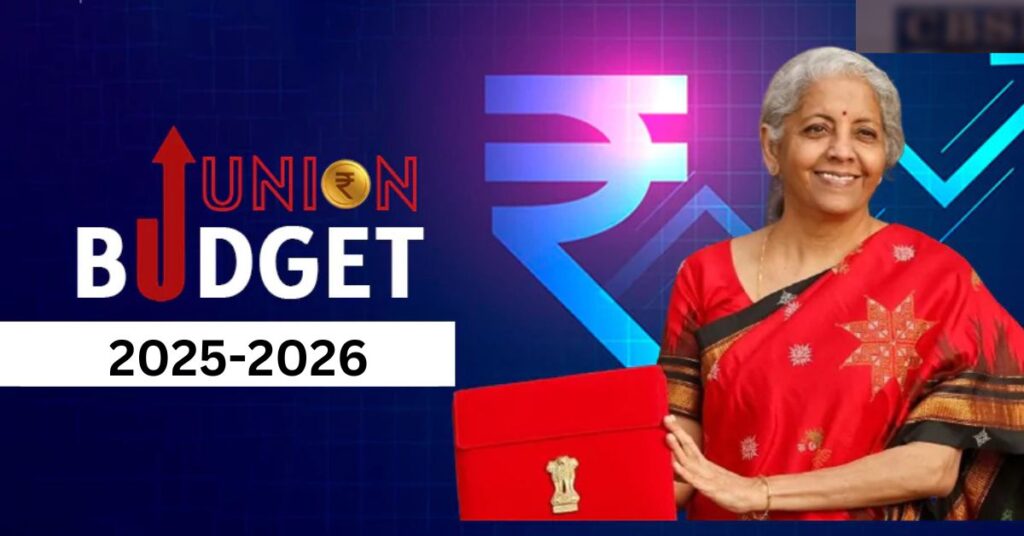The Union Budget 2025, set to be presented by Finance Minister Nirmala Sitharaman on February 1, 2025, has garnered immense anticipation from various sectors of the economy.
With India aiming to sustain its growth trajectory amidst global uncertainties and domestic challenges, the upcoming budget is expected to address key areas such as tax reforms, GST rationalisation, capital expenditure (capex), and measures to boost consumption.
This article delves into the top expectations from Budget 2025, highlighting the demands of industry stakeholders and the potential impact on the Indian economy.
Key Expectations from Union Budget 2025

1. Tax Reforms to Boost Disposable Income and Consumption
One of the most anticipated aspects of Budget 2025 is personal income tax relief. Experts suggest that rationalising tax slabs under the new tax regime could significantly increase disposable income and spur consumption.
- Proposed Changes in Tax Slabs:
- Exemption limit raised to ₹10 lakh for middle-class taxpayers.
- Introduction of a 25% tax slab for incomes between ₹15 lakh and ₹20 lakh.
These adjustments are expected to provide relief to salaried individuals and improve liquidity in households, potentially driving demand in sectors like real estate, FMCG, and automobiles.
Additionally, there is a growing demand for rationalising capital gains tax by reducing rates and increasing indexation benefits. Simplified tax structures could encourage retail investments in financial markets and long-term wealth creation.
2. GST Rates Rationalisation Across Sectors
The Goods and Services Tax (GST) framework has been a cornerstone of India’s indirect taxation system since its inception. However, industry leaders are calling for further simplification and rationalisation of GST rates in Budget 2025:
- Hospitality Sector: A reduction in the GST rate from 18% to 12% for hotels with tariffs above ₹7,500 per night could boost domestic tourism.
- Food & Beverage Industry: Reinstating Input Tax Credit (ITC) under GST for restaurants and cloud kitchens would lower operational costs and improve profitability.
- Health Insurance: Lowering GST on health insurance premiums from 18% to 5% or 12% could make healthcare more affordable for middle-class families.
Such measures would not only ease compliance but also stimulate growth in these high-potential sectors.
3. Capital Expenditure (Capex) for Infrastructure Development
India’s infrastructure sector is expected to remain a key focus area in Budget 2025. The government is likely to announce a significant increase in capex allocation—estimated at ₹11 lakh crore—to drive economic growth through large-scale projects.
- Railways: A projected 15-20% increase in capital allocation for Indian Railways could enhance connectivity and logistics efficiency.
- Roads & Highways: Continued investment in road networks and multi-modal logistics parks will strengthen India’s transportation infrastructure.
- Green Energy Transition: Enhanced funding for renewable energy projects like offshore wind farms and green hydrogen initiatives aligns with India’s sustainability goals.
With every rupee spent on infrastructure generating a threefold impact on GDP, increased capex is expected to have a multiplier effect on economic growth.
4. Measures to Boost Consumption Across Urban and Rural Markets
Consumption trends have shown signs of slowing down in urban areas due to inflationary pressures, while rural demand has witnessed a revival post-monsoon recovery in 2024. To balance these dynamics, targeted measures are anticipated:
- Job creation initiatives through public welfare schemes and infrastructure projects.
- Increased allocation under PM Awas Yojana to support affordable housing.
- Support for MSMEs through tax incentives and easier access to credit.
Boosting household incomes rather than direct consumption incentives remains a priority, as this approach ensures sustainable demand growth over time.
5. Sectoral Incentives for Growth-Oriented Policies
Manufacturing Sector
The Production-Linked Incentive (PLI) scheme is expected to be expanded to cover additional sectors like electronics, textiles, and furniture manufacturing. This move would encourage domestic production while reducing import dependency.
Tourism & Hospitality
Industry experts advocate for eco-tourism incentives and policies that promote regional tourism hubs. Simplified GST norms for international tourists could further position India as a global travel destination.
Real Estate
Increasing the deduction limit for home loan interest payments from ₹2 lakh to ₹2.5 lakh would make housing more affordable while stimulating demand in the real estate sector.
Energy Transition
Budgetary support for renewable energy projects like solar panel manufacturing and EV infrastructure development will accelerate India’s shift towards sustainable energy solutions.
Challenges Facing Budget 2025
While expectations are high, balancing fiscal consolidation with growth-oriented spending remains a challenge for the government:
- The fiscal deficit target of 4.5% of GDP by FY26 limits room for aggressive spending.
- Global economic uncertainties may impact India’s export-driven sectors.
- Inflationary pressures continue to weigh on consumer sentiment.
Despite these hurdles, strategic investments in infrastructure, tax reforms, and policies fostering innovation could help sustain India’s growth momentum.